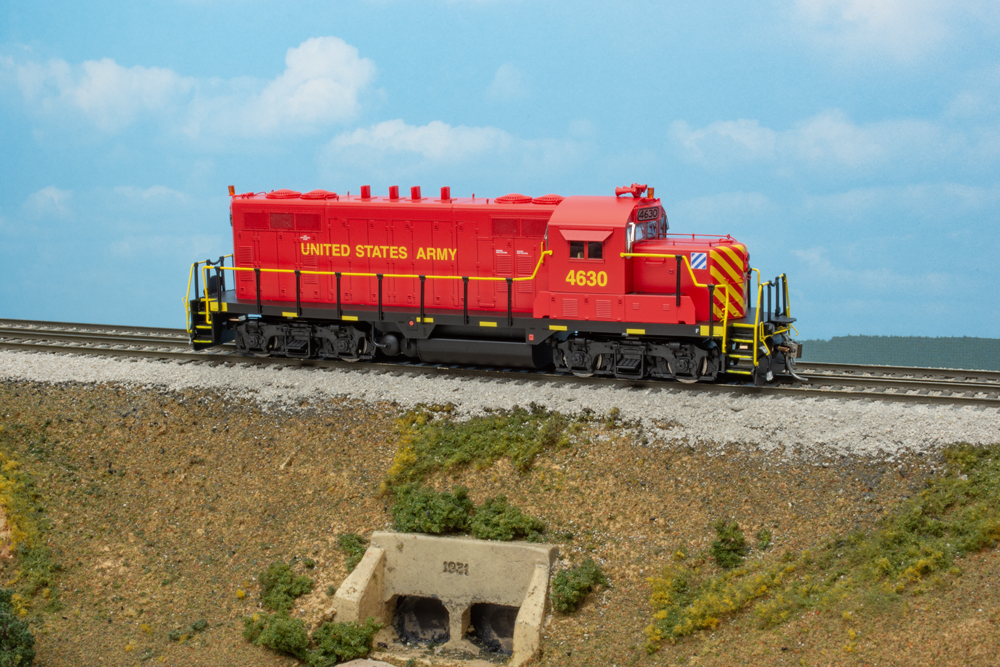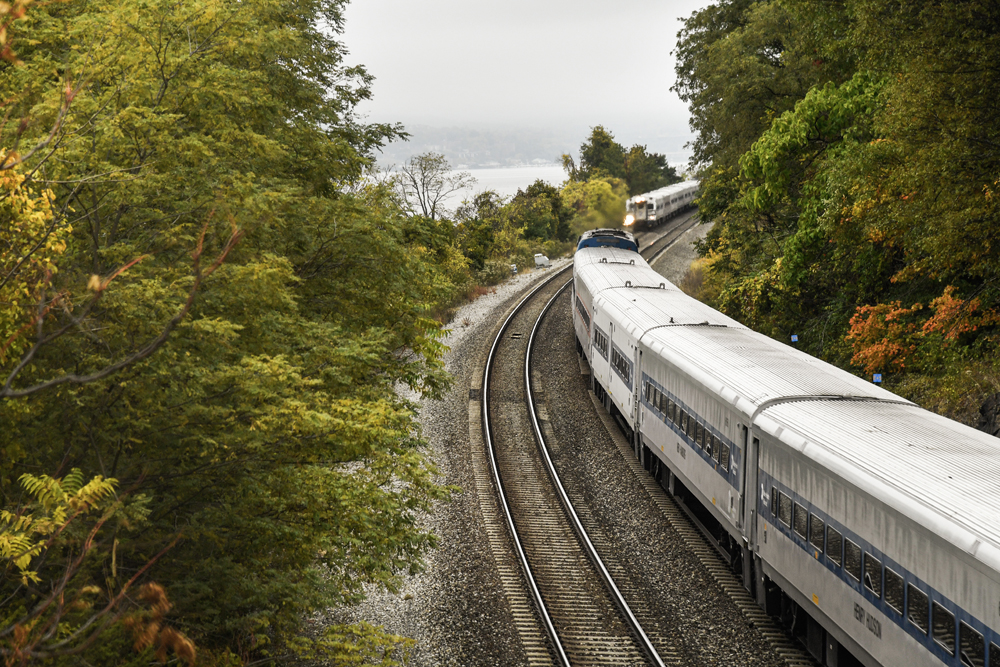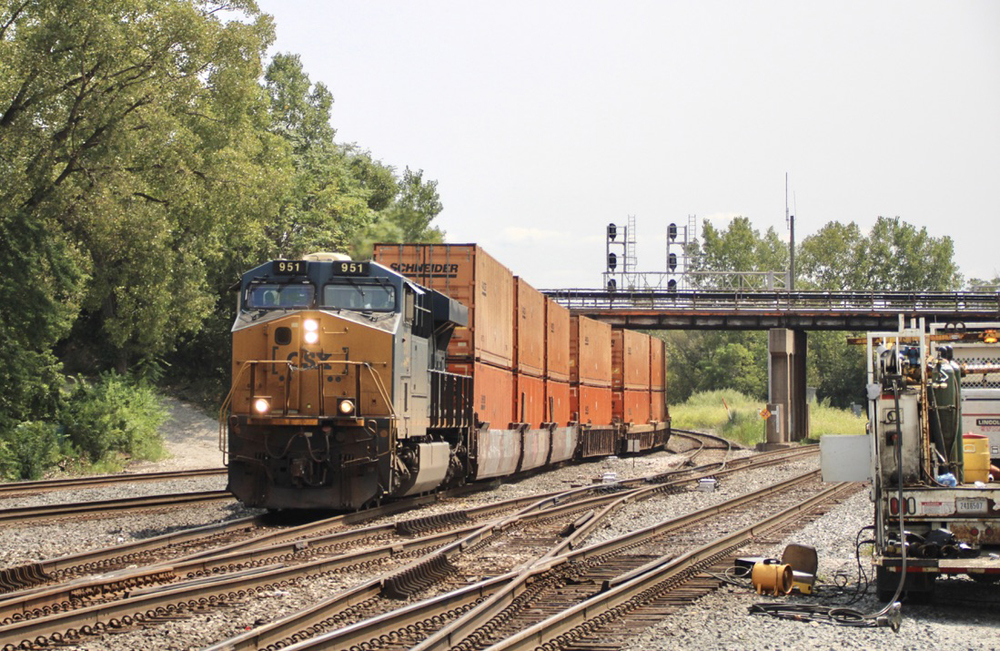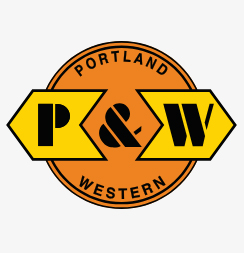RTC is committing to this project after more than 18 months of analysis and collaboration with local trail partners and state agencies whose work is critical to the success of this significant undertaking. Analyses that were used to confirm the project’s viability included a thorough assessment of route options using RTC’s database of more than 34,000 miles of open trails nationwide; analyses of state and local trail plans; and discussions with hundreds of local trail partners and state agencies representing all of the trails along the potential route.
“At RTC, we’ve known the potential of a coast-to-coast rail-trail for decades,” said Keith Laughlin, RTC president. “But before we committed to bringing this vision to life, we wanted to be certain it was viable. With open trails comprising more than 50 percent of the potential route, combined with strong local and state enthusiasm, we are now confident that the Great American Rail-Trail can be completed. RTC is ready to lead the effort to connect the trail across communities, counties and state lines to create a seamless off-road biking and walking journey for the country.”
Separated from vehicle traffic, Great American Rail-Trail travelers will be able to experience the diversity of America’s landscape, its people and its places as the route traverses 12 states moving west from its start in Washington, D.C. While the full route for the trail won’t be released until spring 2019, RTC has revealed the 12 gateway trails that make the Great American Rail-Trail possible.
- Capital Crescent Trail, Washington, D.C., and Maryland
- Chesapeake & Ohio Canal National Historical Park, Washington, D.C., and Maryland
- Panhandle Trail, Pennsylvania and West Virginia
- Ohio to Erie Trail, Ohio
- Cardinal Greenway, Indiana
- Hennepin Canal Parkway, Illinois
- Cedar Valley Nature Trail, Iowa
- Cowboy Recreation and Nature Trail, Nebraska
- Casper Rail Trail, Wyoming: This 6-mile trail is an important connector in one of the largest cities in Wyoming
- Headwaters Trail System, Montana
- Trail of the Coeur d’Alenes, Idaho
- Palouse to Cascades State Park Trail, Washington
“The Great American Rail-Trail is a bold vision—one that will take years to complete. The investment of time and resources necessary to complete this trail will be returned many times over as it takes its place among the country’s national treasures,” said Laughlin. “As we embark on the journey to complete the Great American Rail-Trail, we embark on the single greatest trail project in the history of the U.S. One that comes with an important legacy of unity, ambition and access to the outdoors for the nation. One that represents an opportunity to do something big for America.”
–From a Rails-to-Trails Conservancy press release














Hopefully this boondoggle will never see the light on day
Let’s bring back the covered wagon and the stagecoach, too! We’ve come full circle.
The capitol Crescent trail was built on the roadbed of tracks that were used to bring coal to a power plant in Georgetown section of DC. When the power plant converted to oil then CSX decided to abandon the route. Immediately there was a push to have them “donate” the route. Instead CSX valued the line at 24 million dollars and the courts ruled that while it was narrow linear route the entire length could be counted as one big land parcel at the going rate. Donors stepped forward to pay the bill.
Now I rode that trail many times on my bike after it was built. However often the area has looked at that same route as a lost chance to connect Silver Spring MD , Bethesda MD and Georgetown DC on a route that would cross connect with multiple other transit lines. The route was there and would have required minor land taking for stations. That will never happen now because NIMBYS will block it.
To Anna Harding:
What many people forget about rail trails is that, if the railroad keeps title to the land-assuming they have it in the first place, since a lot of lines are built on easements-they can rebuild. Railroads, as you are probably aware, are federally regulated(interstate commerce and all that, which falls under the purview of Congress), so local and state law will be superseded. That doesn’t mean there won’t be some nasty legal wrangling to keep the trains off their own right of way, but the railroad should prevail. One solution is to leave the tracks in place, perhaps fenced off to discourage trespassers, though there are some in the trail riding world for whom that is not acceptable.
On eminent domain:
Sooner or later, government at some level will attempt to evict some property owner who didn’t want to take the offer for whatever the government thought their place was worth, and refused to move. There was a case in New London CT some years back where a whole neighborhood was essentially run off by the city, so they could turn the land over to a developer. The case went on for years, the project never got built, and the folks who lost their homes were displaced for nothing. I can see such a situation becoming a standoff, and probably get violent, since that seems to be the inevitable conclusion to many conflicts these days. I have a hard time supporting government in this instance. People who get rolled in eminent domain cases are typically not happy about it, as you may imagine, and perhaps intransigence is the only way they will get a better resolution once they have been taken advantage of in the courts.
You refer to the taking of personal property. I assume you are talking about civil asset forfeiture. This is a scam, and outright thievery by the government. Anyone who has had property taken via CAF should turn around and prosecute whatever agency took their assets under RICO. People whose property is taken via this process often don’t get it back, or don’t get all of it back, and attempting to do so is expensive and time consuming. The government, usually some branch of law enforcement, says, “this is the result of criminal activity,” and takes whatever it is they have their eye on, usually, but not limited to, cash or vehicles. They do not have probable cause to make that allegation. Often, they don’t have enough to get a search warrant. The individuals whose property is taken are frequently not charged with any crime related to the assets seized, never mind convicted. It’s one reason you should never let the cops search your car at a traffic stop, especially if you have any appreciable amount of cash with you. CAF should be outlawed at the Federal level. It won’t, because they get way too much money that way, over $5 billion in 2014, which ironically, is more than the value of property stolen in all the burglaries that year, making government bigger thieves than actual crooks.
The demand is there for trails. Maybe not isolated segments in the middle of nowhere, but where there is population there is riders.
Bicycling has a larger share of commuter trips than public transit in the United States. This is also true in Europe, even though their transit is better. Trails have been shown to induce bicycle ridership and commuting. It isn’t surprising that more people bike than ride transit, as transit serves only a limited few markets and most travel is close to home, within bicycling distance (even though most of us drive).
The Appalachian Trail shows that a long trail will attract users and leave a positive cultural impact. I have no doubt that this trail would too.
The following comments represent only a personal opinion and do not reflect the opinion of my employer, any governmental agency, or any corporate or non-incorporated entity of any nature whatsoever. These comments do not constitute legal advice and should not be relied up for any purpose whatsoever. Consult an attorney licenses to practice in your jurisdiction for accurate information.
Mister Small:
Before we get all wound up in the Sovereign Citizen and State’s Rights stuff, there are a couple of things you need to know.
We will start with your home. You do not own your home, nor the property it is sitting on. All real property in the United States, every square inch of it, is owned by the United States Federal government. When you buy your home what you are actually buying is an estate known as “fee simple” (this is a gross oversimplification but close enough for this purpose). You are, in effect, renting the property from the government, who retains ultimate title.
This is why they can charge property tax and why you have to pay it. If you don’t pay your rent the landlord will come and boot you off the property. If you don’t pay your property tax the government will come and boot you off the property.
I hear the quibble now. “But I don’t pay property tax to the feds, I pay it to my local government! Therefore your analysis is wrong!”. You do, actually, but the authority to collect taxes is subrogated to the local government acting on behalf etc.etc. You just don’t know it.
This is the authority under which they can come and claim eminent domain and boot you off your property. However, the takings clause of the Fifth Amendment requires you to be compensated for the loss of your title in fee simple. And unless the state you are living in has something similar in its constitution the only protection you have against a state or local level taking is an incorporation under the 14th Amendment. They own it. You don’t.
This has been extended to personal property as well…the details of which I don’t feel like going in to, I’m not your attorney, but it’s there. Believe me on this one, they can, and they do.
This authority, like all authorities, is occasionally abused. But the government, on its several levels, does have the authority to take what they like, any time they like, as long as they can justify this taking “for public use”. And be thankful that we do have the Bill of Rights, otherwise they could (and probably would) come and take whatever they like and leave you standing out in the cold.
Is it Constitutional? You bet.
And Mister Winter:
Quod erat demonstratum.
The above comments are general in nature and do not form the basis for an attorney/client relationship. They do not constitute legal advice. I am not your attorney. Find your own damn lawyer.
Anna, your insightful posting contains many questions that might be summed up merely by acknowledging that the Rails To Trails Conservancy, being in business for many years, has undoubtedly planned for these contingencies.
There are derelict 19th century industrial properties everywhere in the US, from steel mills to factories to rail facilities. The RTT group is the only one I know that makes comprehensive use of one category of these abandonments.
What gives the Federal Government the right to own land and improvements for business purposes. NOTHING! To own and operate the Post Office and to establish Post roads is all the feds are allowed to do. Anything more is Un Constitutional! It is the states rights to fund railroads should they choose to do so
Yes, a land grab it is, because the “RTC” has no teeth by which to require, make, demand, force the conserved land to be returned to a railroad for use of freight/passenger service.
The following comments represent only a personal opinion and do not reflect the opinion of my employer, any governmental agency, or any corporate or non-incorporated entity of any nature whatsoever.
One of the nicer things about a rails-to-trails initiative is that it keeps the right-of-way intact. This results in a linear park to be sure but, like a straight up rail banking scheme, retains the possibility of the ROW being reactivated at some point in the future.
In the history of the railroad industry in North America we have seen traffic patterns shift, and then occasionally shift back. Rail lines which once were heavily used have been abandoned, and some rail lines, once abandoned, have been brought back into use. It is therefore advantageous to everyone to preserve these contiguous rights of way as linear park, and this is often done.
The problem from my perspective is the legal environment of such a linear park. If the abandoning railroad retains ownership, what provisions are made for upkeep, and under what conditions is use of the linear park afforded to the public? If the abandoning railroad does not retain ownership, how, and under what conditions can it reassert domain (eminent or otherwise) over the property so that it can activate the line?
One of the issues I see is perception. We already have a perception by the public that rights of way are public in nature, and that in many cases the use of them by such things as trains is secondary and should not interfere with right of access and right of enjoyment by the public. While it is often not feasible to fence off a right of way, the relative lack of access controls, and the very ease of access to what is actually private property fosters this perception.
This perception will come into play if a railroad should decide to reactivate a dormant line. I can see some nasty, bitter litigation resulting from the public, unwilling to allow the railroad to usurp “public parkland”, rising up in arms (figuratively speaking) against the railroad.
Does any one have any information on the reactivation of dormant lines, and of the reaction to the public to such reactivations? I suppose I could beat up Westlaw for cases, but I have other things to do when I hit that database.
The above comments are general in nature and do not form the basis for a shyster/scumbucket relationship. They do not constitute legal advice. I am not your attorney. Find your own damn lawyer.
To Ms. Harding: The story I’m going to share is about a dormant ROW for 30 years that was never abandoned. My state along with a regional RR wanted to reactivate this 11 mile line.
The outrage of NIMBY’s was deafening not to mention all the misinformation & scare tactics used. And this protest was over a tree & brush covered strip of land that still had tracks buried under the grass.
One can only imagine the outrage if this was a trail & the RR wanted it back.
Story conclusion. After 7 years of debates, protests & hearings, the rail line was brought back to life & is serving several customers, which includes new customers that built along the newly rebuilt tracks.
Unfortunately we know the tantrums that would be thrown if a RR would try to take back a trail even if some legal document days they can. In this case look at the tantrum over an dorment line.
A land grab by bikers paid for by your tax dollars.
Most trails are non-revenue paid for out of general taxes and/or the parks budget, with some exceptions. Where I live, Waukesha County and Milwaukee County trails are free but one of the two state trails requires a state parks sticker. When I ride on the free trails for free I don’t feel any more guilt than someone who uses the parks for free to fly a kite or swim at the beach.
Bike trails are great for railfans. You have a train driver’s view of the different construction standards to which the railroads were built.
Ms. Vinson, the Milwukee’s Pacific extension was a wonderfully scenic route, but the original ROW is hardly suited for a high-speed rail line. While I suppose a TGV-type line could be built roughly following the Milwaukee’s route at who knows what cost, why do so? I am sure there are better (and cheaper, though still unreasonably costly) routes that could be chosen if something like this ever were to be done.
Here’s a bit a history relating to Ms. Harding’s earlier posting about reactivating a rail ROW that’s been converted to a trail (and possible public opposition to doing so).
In 1918, when the British Columbia provincial government took over the Pacific Great Eastern, the railroad consisted of two disconnected segments: 20 miles from North Vancouver to Horseshoe Bay, then a 28 mile gap, and then 164 miles from Squamish to Clinton. The southern segment had little traffic, and the last train ran over that line in 1928, after which it fell into disuse but was never officially abandoned. (Whether the rails were taken up, or they simply became overgrown and eventually covered up I don’t know.) Fast forward to 1953, when the PGE decided to extend their route south from Squamish to North Vancouver. They constructed 28 new miles from Squamish to Horseshoe Bay, and rebuilt the Horseshoe Bay to North Vancouver section along their original ROW. This did not go over well with many residents living along the ROW, since they had built sheds, gardens, etc. right up to (and maybe even on) the ROW, assuming it had been abandoned. The residents protested (and maybe even tried legal action) against the PGE, but the railroad still legally owned the ROW since it had never been abandoned. By 1956, the line was complete and trains ran all the way to North Vancouver.
Of course, that was then, and in Canada. What would happen in the U.S. in the future is beyond the power of my crystal ball.
So, now everyone agrees that the Milw.Rd., trestles and all , should have been preserved.
The following comments represent only a personal opinion and do not reflect the opinion of my employer, any governmental agency, or any corporate or non-incorporated entity of any nature whatsoever.
Mister Hicks:
The following reference might be of interest to those who are willing to wade through the legalese. McGowan, M.J., 2015 VJEL 16:482. It is a fairly recent law review article about which I will not comment, for professional reasons. http://vjel.vermontlaw.edu/files/2015/03/McGowan.pdf .
Enjoy.
The above comments are general in nature and do not form the basis for a mouthpiece/dirtbag relationship. They do not constitute legal advice. I am not your attorney. Find your own damn lawyer.
A missed opportunity for Amtrak to have its own right-of-way through the Pacific Northwest is the former Milwaukee Road’s “Olympia Hiawatha” route. An upgrade and grade separation of the line would allow for the first high speed long distance train in the Americas instead of converting it into a trail. Brightline or another private railway entity could find this abandoned line holds great potential.
I am trying to be respectful of the posting etiquette but I must sayMORE LIBERAL B.S..
Robert Drake, amen except you forgot one thing: the millions and millions of taxpayer dollars that will be spent so 11 people a day can use the thing. Useful? Put the tracks back and use them for some sort of passenger rail.
Spend the money on infrastructure . We have enough trails now !!!
I think they left out a quote: “This plan will come together once we are able to force Union Pacific to abandon their line from Chicago through Cheyenne to the west coast. This is obviously too important of a trail route to allow it to be cluttered up with those boxcar locomotive thingies”
A wonderful idea. Who would have thought all those abandoned rail lines could be used for a positive purpose.
These trail advocates see an abandoned right of way and an active railroad as the same opportunity. Thats not good.
Nice vision, but look at the aggressiveness with which a rails-to-trails initiative in upstate New York is trying to force the abandonment of portions of the scenic Adirondack Scenic Railroad (former New York Central route), which has revitalized tourist traffic and trade in that portion of the State. Aligned with powerful segments of the NY State legislature, and ignoring the many tourist dollars pouring back into the Adirondack area of the state, this rail-trails initiative has many of the earmarks of a forced grab of property from a successful tourist railroad. And who will fund this coast-to-coast vision? Who currently funds the privately-run tourist railroads? What legacy will we leave to future generations? There had better be some serious discussion on this issue, with ears open on all sides, especially to local concerns, and no forced agenda.